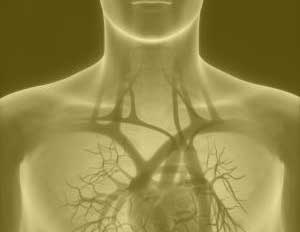- Home
- Editorial
- News
- Practice Guidelines
- Anesthesiology Guidelines
- Cancer Guidelines
- Cardiac Sciences Guidelines
- Critical Care Guidelines
- Dentistry Guidelines
- Dermatology Guidelines
- Diabetes and Endo Guidelines
- Diagnostics Guidelines
- ENT Guidelines
- Featured Practice Guidelines
- Gastroenterology Guidelines
- Geriatrics Guidelines
- Medicine Guidelines
- Nephrology Guidelines
- Neurosciences Guidelines
- Obs and Gynae Guidelines
- Ophthalmology Guidelines
- Orthopaedics Guidelines
- Paediatrics Guidelines
- Psychiatry Guidelines
- Pulmonology Guidelines
- Radiology Guidelines
- Surgery Guidelines
- Urology Guidelines
Case of coronary artery ectasia presenting as recurrent angina: a report

Dr Vito Damay Faculty of Medicine, Universitas Pelita Harapan, Tangerang, Banten, Indonesia and colleagues have reported a rare case of right coronary artery ectasia. The case has appeared in the Journal of Medical Case Reports.
Coronary artery ectasia is characterized by abnormal dilatation of the coronary arteries. It is observed in 3–8% of patients undergoing coronary angiography and sometimes leads to acute coronary syndrome regardless of the presence or absence of coronary stenosis or atrial fibrillation.
According to history, a 61-year-old Indonesian man presented with typical angina that began 1 week before admission and had worsened 3 hours prior to admission. Accompanying symptoms included dyspnea, nausea, and sweating. He was hemodynamically stable and had a history of tobacco smoking and dyslipidemia. An electrocardiogram showed ST-segment depression and T inversion. Laboratory results showed an international normalized ratio of 1.28. Dual antiplatelet therapy was administered along with fondaparinux, and symptoms were alleviated. Coronary angiography showed an ectatic and turbulent mid-distal right coronary artery and slow flow at the first presentation. There was a patent stent in the proximal-mid left anterior descending coronary artery. This patient had previously presented with recurrent acute coronary syndrome and received two coronary stents for the stenotic vessels.
The patient had right coronary artery ectasia and experienced recurrent acute coronary syndrome. He received dual antiplatelet therapy along with warfarin after stenting of his left anterior descending coronary artery. However, he presented with unstable angina pectoris 7 months before the latest admission and at the latest admission despite a patent stent and no other significant obstructive lesion. Unstable angina pectoris might have been caused by slow flow, microvascular angina caused by small thrombi and/or vasospasm, or epicardial thrombosis at the ectatic coronary artery that dissolved after anticoagulation therapy prior to coronary angiography. Anticoagulant therapy may have a greater benefit than antiplatelet therapy in this patient due to the turbulence and stasis of blood in the ectatic vessel, although coexisting coronary conditions mandated antiplatelet therapy. His international normalized ratio was suboptimal and needed to be improved.
Coronary ectasia may play a role in recurrent acute coronary syndrome, and administration of an anticoagulant to prevent acute coronary syndrome in this patient was in accordance with the varying hemodynamic property of coronary artery ectasia.
For more details click on the link: https://doi.org/10.1186/s13256-019-1979-x

Disclaimer: This site is primarily intended for healthcare professionals. Any content/information on this website does not replace the advice of medical and/or health professionals and should not be construed as medical/diagnostic advice/endorsement or prescription. Use of this site is subject to our terms of use, privacy policy, advertisement policy. © 2020 Minerva Medical Treatment Pvt Ltd